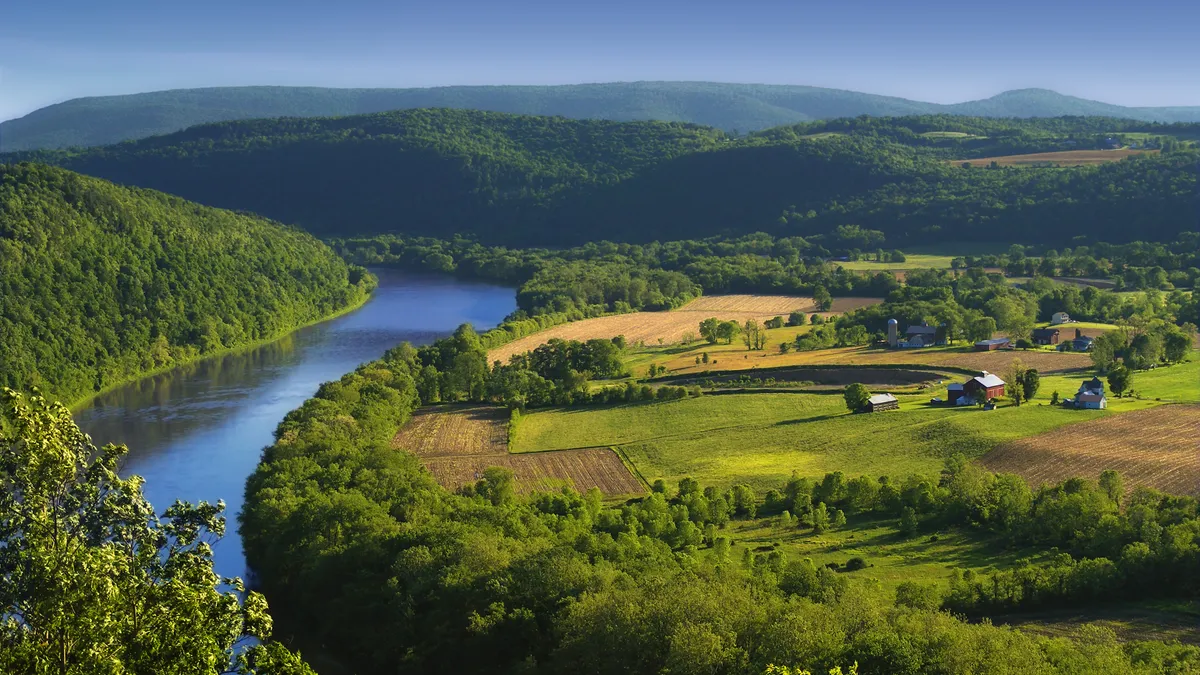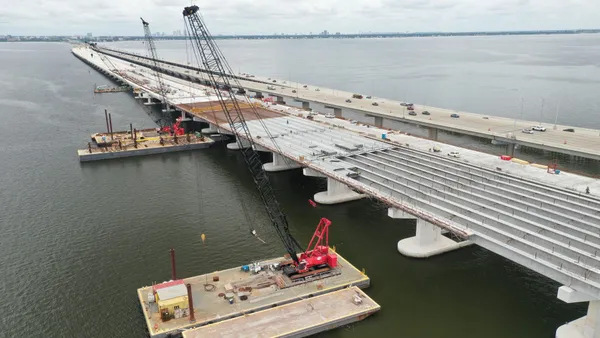Dive Brief:
- York Energy Storage wants to build a $2.1 billion, 1,000-acre dam and power turbine project on the Susquehanna River in York County, Pennsylvania. The project entails creating a new reservoir that would require flooding 600 acres, and building a 1.9-mile-long, 225-foot-high dam and two smaller dikes.
- The Reading, Pennsylvania-based company applied in February to run a feasibility study for the hydroelectric plant. The Federal Energy Regulatory Commission said the application is incomplete, per WGAL, but the company has time to resubmit.
- The project would displace more than 40 properties, according to WGAL, to the chagrin of homeowners in the area. This is not the first dam proposal in the region. Similar projects in 1990 and 2011 received large pushback and were eventually dropped.
Dive Insight:
York Energy Storage has touted the benefits of the clean energy the project would produce for the 13-state regional power grid, according to LancasterOnline, though such dam and reservoir builds still disrupt the environment. York Energy Storage’s proposal says the new plant would churn out up to 8,560 megawatt-hours in a 10-hour cycle, enough to power a city of half a million people.
The facility would act as storage for energy that can be tapped when power is not being generated by wind or solar sources. Water is pumped uphill to a reservoir using surplus power generated during peak periods, and that water then generates electricity by traveling through turbines when there is a power deficit, a concept called “pumped storage.”
The facility would take several years to complete, York Energy Storage said, and have a 50-plus-year lifespan.
Fewer big dam builds, more remediation and removal
Although some big dams are still being built, the heyday for these types of projects is likely over. Worldwide, construction of large dams fell from a late-1970s peak of about 1,500 a year to 50 per year in 2020, a 2021 study from United Nations University’s Institute for Water, Environment and Health shows. There is a growing understanding of the harm dams can cause to ecosystems and of the danger they pose to area residents and businesses when they are no longer kept up to code — which many are not.
The UN report found that globally, “tens of thousands of existing large dams have reached or exceeded an ‘alert’ age threshold of 50 years, and many others will soon approach 100 years. These aged structures incur rapidly rising maintenance needs and costs while simultaneously declining their effectiveness and posing potential threats to human safety and the environment.”
In the U.S. alone it would cost $157.5 billion to rehabilitate its 88,616 deficient non-federal dams, a recent report by the Association of State Dam Safety Officials shows, which is far greater than the funding available to do so. ASDSO estimates the price tag to remediate just the country’s most critical dams is $34.1 billion.
Dam remediation and removal efforts are currently getting a boost from the 2021 Infrastructure Investment and Jobs Act, which includes $4 billion over five years for such projects. Meanwhile, dam removal projects are growing more numerous — the largest dam removal project in the country’s history is set to kick off on the Klamath River in California and Oregon.














